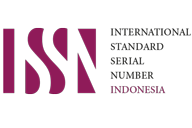Analisis Gaya Mengajar Guru SMA Terhadap Minat Belajar Siswa
DOI:
https://doi.org/10.53863/kst.v6i01.1068Keywords:
Teacher Teaching Style; Interest to learnAbstract
This research aims to analyze the relationship between teachers' teaching styles at the high school level and students' interest in learning. Student interest in learning is an important factor in achieving optimal learning outcomes. Problems that often occur in the classroom are incompatibility of teaching styles with student needs, lack of creativity and innovation, lack of interaction and participation, not being aware of the diversity of student learning styles, and lack of use of educational technology. Therefore, this research was conducted to determine the influence of high school teachers' teaching styles on students' interest in learning. The method used in this research is literature study. The results of the analysis show that there is a correlation between the teacher's teaching style and students' learning interest. A teaching style that is interactive, supports student participation, and motivates their creativity tends to have a positive impact on interest in learning. On the other hand, a teaching style that is monotonous and less interactive can potentially reduce students' interest in learning. These findings provide important implications for the development of teaching methods in high school, by emphasizing the need to pay attention to teaching styles that can stimulate students' interest in learning. This research can be a basis for preparing guidelines for developing teacher professionalism and improving the education system that focuses on the quality of learning at the high school level.
References
Abubakar, A., Srimulyani, E. and Anwar, A. (2019). ., Identification of Some Distinctive Values of Acehnese Malee (Shyness) for Character Education. Jurnal Ilmiah Peuradeun, 7 (1), 125–140.
Emda, A. (2018). Kedudukan motivasi belajar siswa dalam pembelajaran. Lantanida Journal, 5 (2), 172–182.
Jefrit J. Messakh, Jacob Messak, Peran Pendidikan Agama Kristen dalam Membangun Karakter Misi dalam Konteks Globalisas. Jurnal: Real Didache. Vol.3, 2. 2023
Hasibuan,J. J, M. (2009). Proses Belajar. Remaja Rosdakarya.
Isjoni. (2018). Guru Sebagai Motivator Perubahan. Pustaka Pelajar.
Kusumaningrini, D. L., & Sudibjo, N. (2021). Faktor-faktor yang mempengaruhi motivasi belajar siswa di era pandemi covid-19. Akademika: Jurnal Teknologi Pendidikan, 10 (01), 145–161.
Lena, M. L. . (2018). Pengaruh Masa Kerja Dan Sertifikasi Guru Terhadap Komitmen Kerja Guru Sma. Jurnal Serambi Ilmu, 15 (1), 104–110.
Muhammad Ali. (2010). Guru Dalam Proses Belajar Mengajar. Sinar Baru Algensindo.
Nugroho, W. A. dan A. N. (2014). Pengaruh sumber Belajar, Cara Belajardan Disiplin Terhadap Prestasi Belajar Mata Pelajaranekonomi Siswa Kelas Xi Ips Smanegeri 2 Kota Pekalongantahun Pelajaran 2013/2014,. 3 (2), 290–298.
Rahmat, H., & Jannatin, M. (2018). Hubungan Gaya Mengajar Guru Dengan Motivasi Belajar Siswa Pada Mata Pelajaran Bahasa Inggris. El Midad, 10 (2), 99–111.
Ramdani, A., Jufri, A. W., Gunawan, G., Fahrurrozi, M., & Yustiqvar, M. (2021). Analysis of Students’ Critical Thinking Skills in terms of Gender Using Science Teaching Materials Based on The 5E Learning Cycle Integrated with Local Wisdom. Jurnal Pendidikan IPA Indonesia, 10 (2), 187–199.
Rizqi, A. A., Yusmansyah, & Mayasari, S. (2018). FaktorFaktor yang Mempengaruhi Motivasi Belajar - The Factors That Influence Students ’ Learning Motivation. Jurnal FKIP Universitas, 6 (2), 1–14.
Suharni, S. (2021). Upaya Guru Dalam Meningkatkan Motivasi Belajar Siswa. G-Couns. Jurnal Bimbingan Dan Konseling, 6 (1), 172–184.
Tahir, M., & Khair, B. N. (2023). Analisis Gaya Mengajar Guru Kaitan Dengan Motivasi Belajar Siswa. Journal of Classroom Action Research. 5 (1), 202–209.
Yuda Prawira Kusuma, M. J. (2014). Pengaruh Motivasi Belajar, Lingkungan Teman Sebaya, Dan Bahan Ajar Terhadap Kesiapan Belajar. 3 (2), 299–306.
Downloads
Published
How to Cite
Issue
Section
License
Copyright (c) 2024 Welly Sany Lekahena,Lamhot Naibaho,Djoys Anneke Rantung

This work is licensed under a Creative Commons Attribution-ShareAlike 4.0 International License.
Authors retain copyright and grant the journal right of first publication with the work simultaneously licensed under a Creative Commons Attribution-ShareAlike 4.0 International License that allows others to share the work with an acknowledgment of the work’s authorship and initial publication in this journal

















